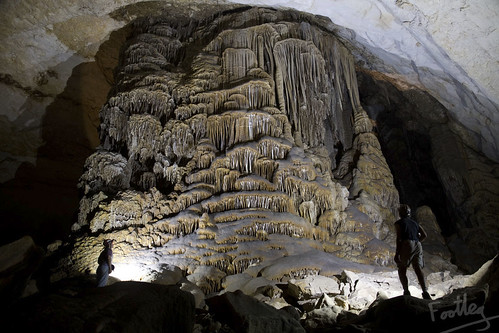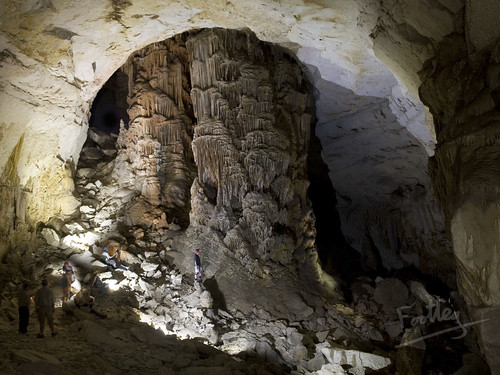jarvist
New member
I split this off from the Bisun review, as I didn't want to hijack the thread, interested in any comments!
http://ukcaving.com/board/index.php?topic=12767.0
For a photo lamp, I'd imagine you could run into CRI problems quite quickly. It's certainly a headache to have different types of LED sources in one shot. It's not just a matter of colour balance there, some LEDs seem to have chemically different phosphors. Certainly some white LEDs fluoresce (orange) under external UV light, and others don't (though this could be a result of a UV blocking barrier coating).
I'd imagine the low CRI of high efficiency LEDs is because they are essentially mixing the blue GaN directly with a semi-transparent Green (+ lower frequency) phosphor, effectively leaving a big dip in the spectrum between the blue peak and the green. So anything aquamarine will render weirdly and ill defined, and violets won't exist. ( The caving relevance I'm thinking of for this is formations like Daren's Blue Greenies )
Of course, more subtly, for photography, there's then also the question of how the rather 'peaky' spectrum of the LED interacts with the colour sensor in a digital camera (+ assumptions about the spectra of incident light used to regenerate a RGB value) or the dyes in a colour film, which may not be correctly described by the CRI.
Fundamentally at the end of the day though, nothing in caving has a 'true' colour as there's never any daylight down there to illuminate it. So you can get away with slightly red / purple tinted mud, as long as the rock isn't green it'll look OK!
Does anyone bother taking a colour chart caving with them? It'd be interesting to see how good the rendering was. The calibrated ones are pretty pricey, but I wonder how close you could get by simply getting a photo-print of the RGB values (i.e. find a Tiff image on the internet), as long as the printer itself was well calibrated...
http://ukcaving.com/board/index.php?topic=12767.0
Only one year off!potholer said:The high CRI thing was from 2010.
potholer said:I'm not sure whether they'd be any better for cave use than the standard LEDs of appropriate colour, and there's a fair efficiency hit compared to simply using more neutral/warm regular LEDs.
For a photo lamp, I'd imagine you could run into CRI problems quite quickly. It's certainly a headache to have different types of LED sources in one shot. It's not just a matter of colour balance there, some LEDs seem to have chemically different phosphors. Certainly some white LEDs fluoresce (orange) under external UV light, and others don't (though this could be a result of a UV blocking barrier coating).
I'd imagine the low CRI of high efficiency LEDs is because they are essentially mixing the blue GaN directly with a semi-transparent Green (+ lower frequency) phosphor, effectively leaving a big dip in the spectrum between the blue peak and the green. So anything aquamarine will render weirdly and ill defined, and violets won't exist. ( The caving relevance I'm thinking of for this is formations like Daren's Blue Greenies )
Of course, more subtly, for photography, there's then also the question of how the rather 'peaky' spectrum of the LED interacts with the colour sensor in a digital camera (+ assumptions about the spectra of incident light used to regenerate a RGB value) or the dyes in a colour film, which may not be correctly described by the CRI.
Fundamentally at the end of the day though, nothing in caving has a 'true' colour as there's never any daylight down there to illuminate it. So you can get away with slightly red / purple tinted mud, as long as the rock isn't green it'll look OK!
Does anyone bother taking a colour chart caving with them? It'd be interesting to see how good the rendering was. The calibrated ones are pretty pricey, but I wonder how close you could get by simply getting a photo-print of the RGB values (i.e. find a Tiff image on the internet), as long as the printer itself was well calibrated...








